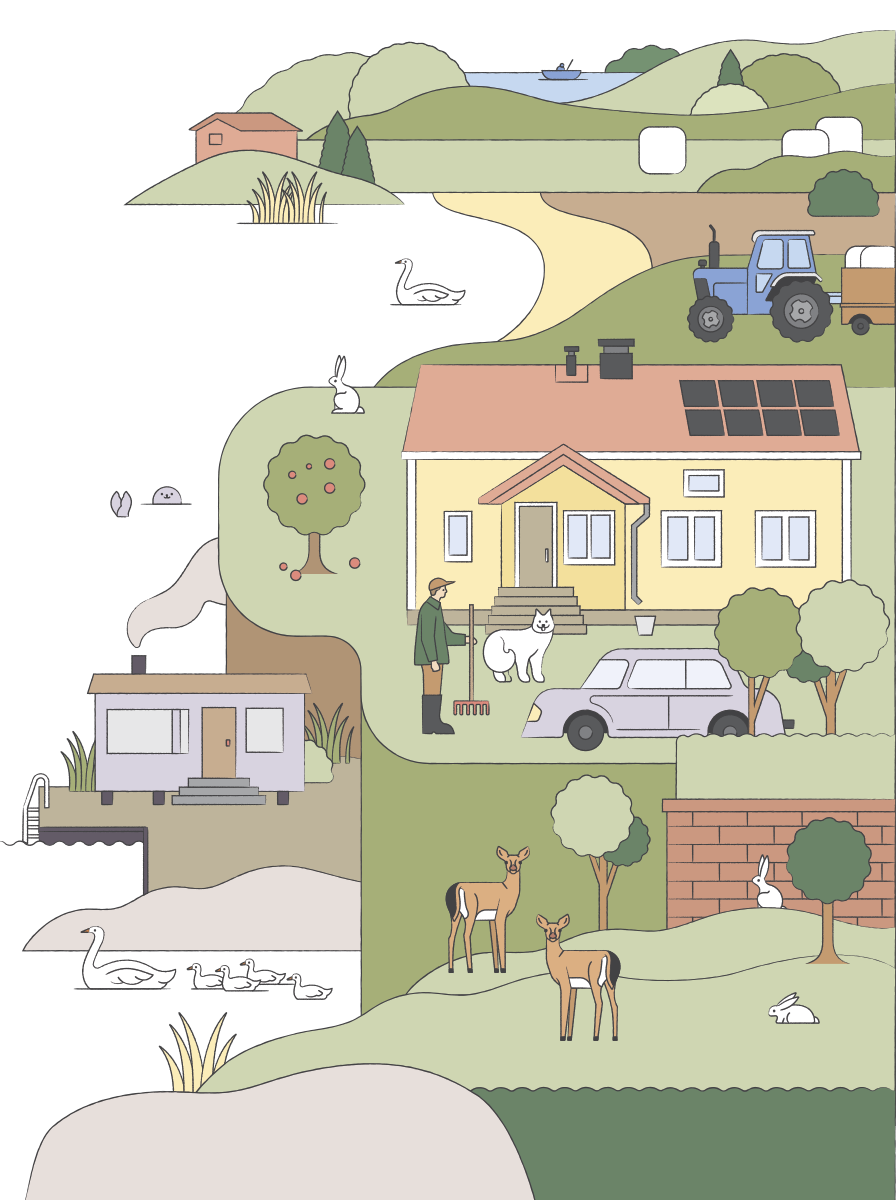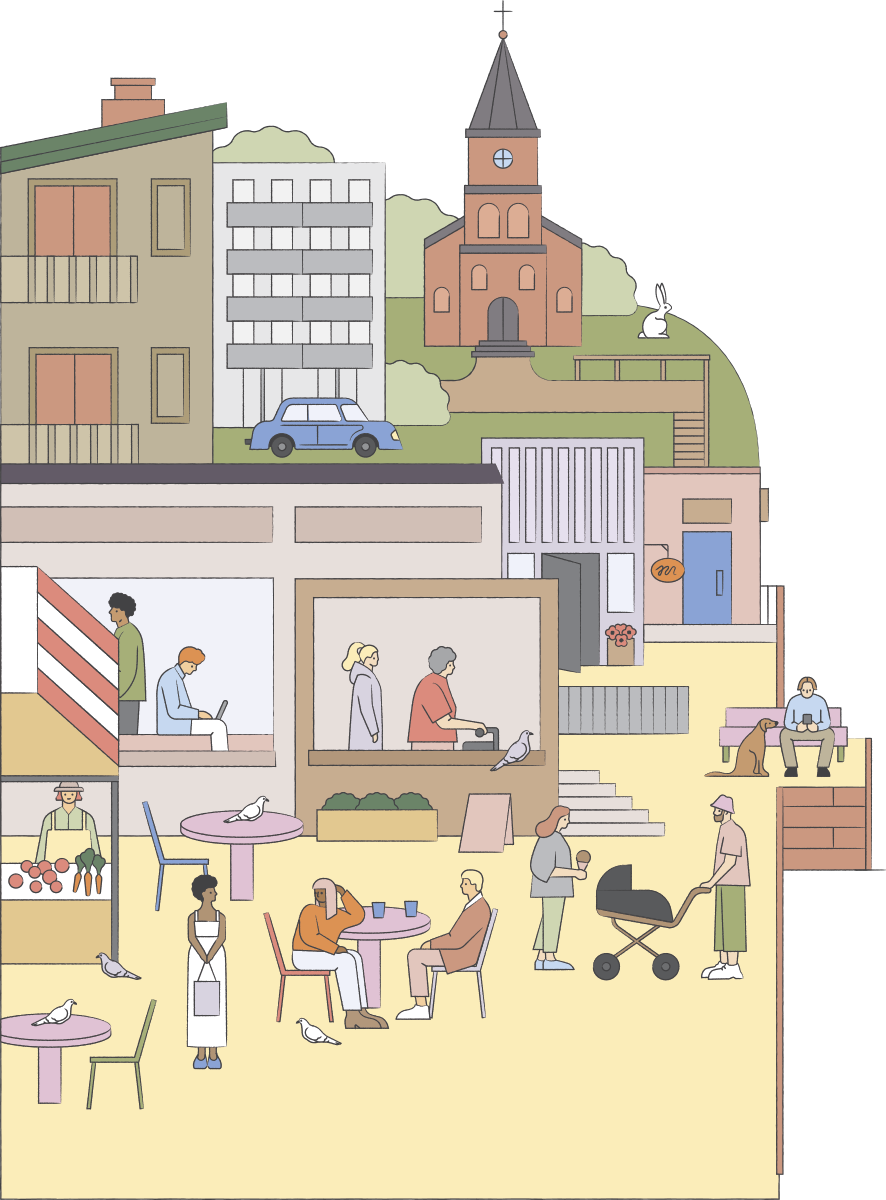The Carbon Footprint of Living consists of the emissions caused by building a home, maintaining and using the building (including heating the rooms and using domestic warm water, and electricity), and eventually demolishing the home. Emissions are largest during the use of the building. Their share is 80% for older houses, but newer, more energy-efficient houses emit less respectively during their use.
The carbon footprint of living can be significantly reduced by choosing renewable forms of energy, by improving the energy efficiency of both the building frame and building services technology, and by avoiding extra floor area. Our ways of living, in particular, impact energy consumption: a wasteful family may consume up to 50% more energy compared to a family that lives more economically in the same kind of residence.
Regarding carbon footprints, different locations and house types all have their pros and cons and require different solutions for reducing their footprints. This is why we first ask you: where and in what type of a house do you live in and what is your heating method?




